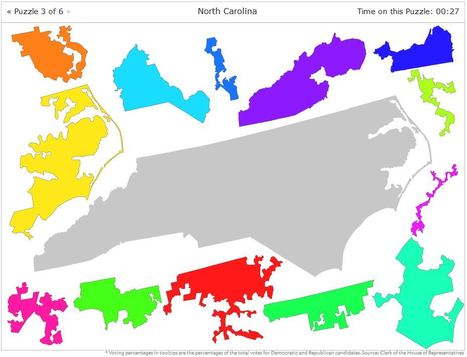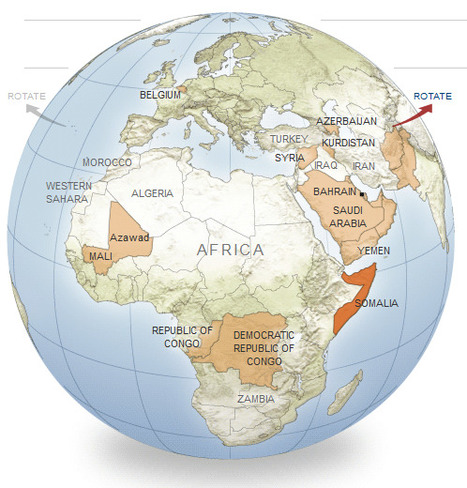Gerrymandering is the practice of redrawing congressional districts after a decadal census to favor one political party over the other.
Get Started for FREE
Sign up with Facebook Sign up with X
I don't have a Facebook or a X account

 Your new post is loading... Your new post is loading...
 Your new post is loading... Your new post is loading...
|

Anna Sasaki's curator insight,
March 24, 2015 8:53 AM
This article is probably one of my favorites I have read so far. It describes perfectly the political instability still present in the world, and that the globe and its boundaries are constantly changing, never staying put for too long. It surprised me at the new borders which most likely are going to happen, such as the unification of parts of Pakistan and Afghanistan. Also, the fact that South Korea is subtly getting ready for the reunification of North and South Korea. Also, there may be devolution in Mali and splintering devolution in the Congo's. This shows devolution as the power in these nations in which are breaking up, such as Belgium and the Flemish peoples. It shows the centrifugal forces behind the breakup of nations, such as ethnicities which vary, or the centripetal forces which bring nations together such as the combination of South and North Korea. 
Caroline Ivy's curator insight,
May 21, 2015 11:12 AM
Devolution/Fragmentation
This article is about nations that could become potentially independent in the near Future, whether due to chronic ethnic incoherence, redrawn governemnt policies, or a growing stateless nation group. Some examples given are an independent Khurdistan, a larger Azerbaijan, and the split of Belgium.
Centrifugal forces are the root of conflict in many countries. These forces include ethnic variety, lack of common language, political instability. These are what may be causing a split in both Belgium (developed country) and Somalia (developing country). There may also be a unification of countries—the map gives an example of the Saudia Arabia, Oman, Yemen, Bahrain, and other melding into one Arabian Gulf Union, of China absorbing Siberia. This does not necessarily herald the presence of centripetal forces, as these countries may be the result of military conquest.
|











This short, simple depiction of gerrymandering serves a strong message. Congressional districts have literally been turned into a jigsaw puzzle. While we can all agree that it is nice to have votes in our own favor, it is unfair to allow political parties to divide up the United States unfairly. It is imperative that such an important decision be fair and justifiable. For the good or our nation, gerrymandering needs to be controlled. When it comes to elections, the United States should be divided fairly and properly. Any altering of the district lines should be considered unethical, immoral, and should be made known to the public so they can decide what should be done. This type of decision affects every single individual living in America, and this should be the least of our worries. It may be beneficial to political parties at the time, but the changing of these should be an eye opener of the type of congressional "leaders" that we look to to make executive decision regarding the rest of our lives.
*Module 7
This showed me how unfair gerrymandering is and how it is a total false representation of what the people want. This diagram not only showed me how it works but it also showed me how it is so unfair...
I. Gerrymandering is the practice of redrawing congressional districts after a decadal census to favor one political party over the other. In this puzzle, the user has to place the congressional districts onto the state/county.
II. I liked this puzzle. I thought it illustrated the oddity of the redrawn districts and highlighted the unfairness of the voting system. The weird shapes of the districts showed how hard the political officials would try to get a voting area where they would be supported. The unfairness is also illustrated with the idea that the congressional districts can be put into a puzzle, where a fair district would be shaped like rectangles or equally sized squares.